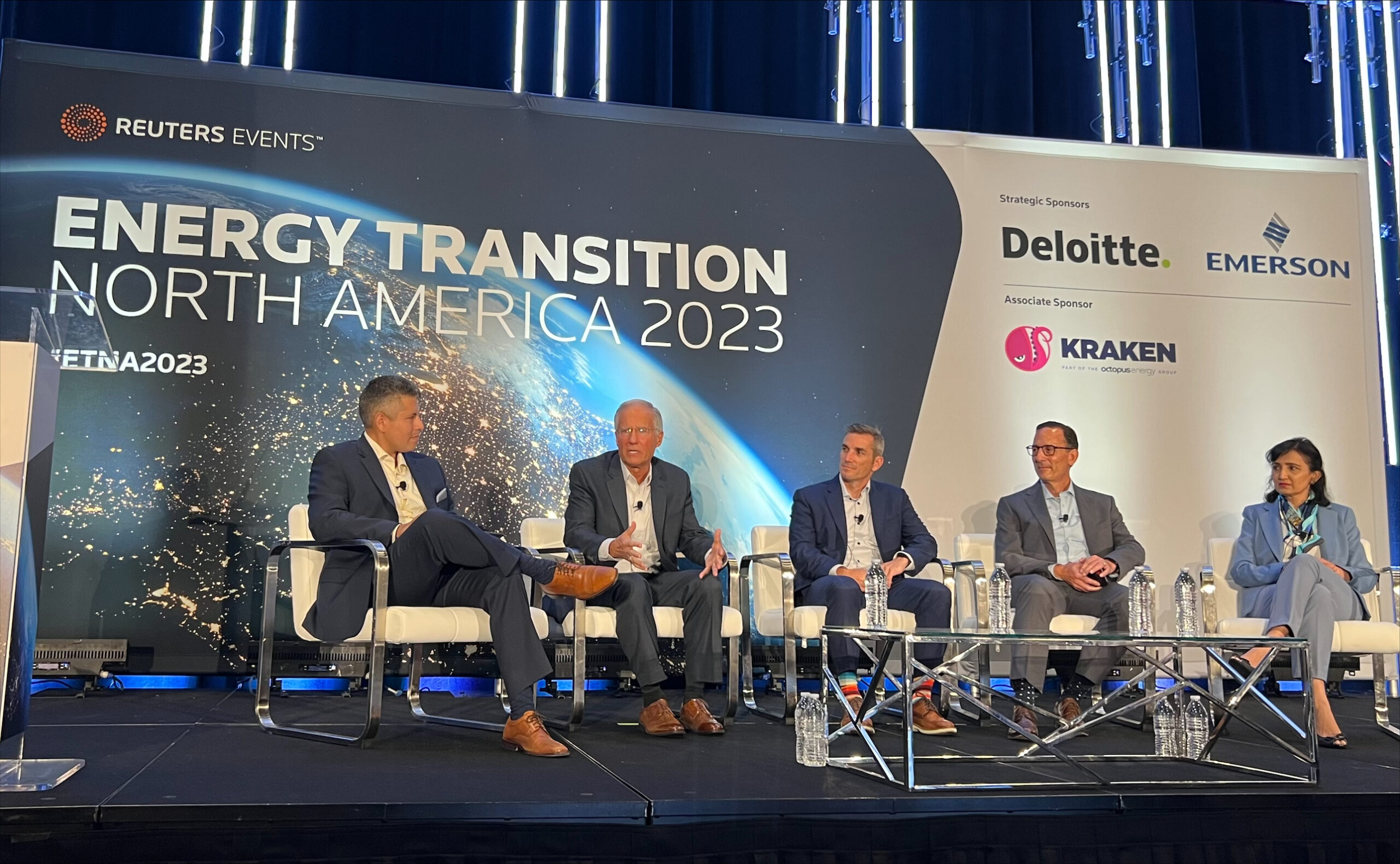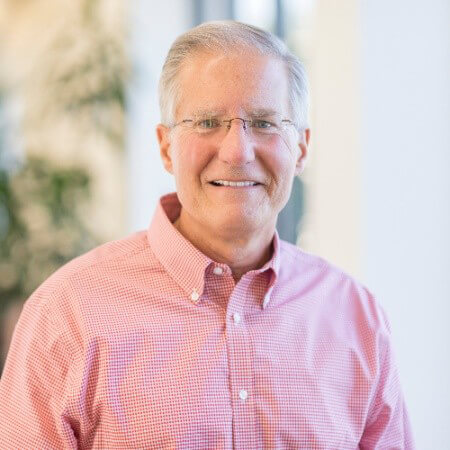At the Reuters Energy Transition North America 2023 in Houston, Texas, Emerson’s Bob Yeager joined a panel, Bearing the Load: The Price of Decarbonization.
 Leaders from Transmission ConEd, ENGIE NA, and Duke Energy joined Bob on the panel. The Chairman, President & CEO of Entergy Texas moderated the discussion. Here is the abstract for this panel.
Leaders from Transmission ConEd, ENGIE NA, and Duke Energy joined Bob on the panel. The Chairman, President & CEO of Entergy Texas moderated the discussion. Here is the abstract for this panel.
Is the decarbonization imperative at odds with the need for stable, secure, load-bearing energy supplies? The challenge for legacy industries rests in balancing the need to decarbonize with the requirement for clean, affordable, reliable supply. Can renewable
technology adapt to manage baseload power? What alternative low- or no-carbon sources exist? What role will natural gas play in supporting the transition? Ultimately, how can the industry harness the benefits of decentralized power to drive net zero progress and deliver the transition?
The moderator opened with the question, Decarbonization has become a priority for energy and industrial stakeholders across North America. What do you see as the biggest push factors driving decarbonization through the market?”
Bob noted two significant drivers of global decarbonization: social/economic and regulatory factors. Global warming, air quality, and health issues are major concerns – fossil fuels, specifically coal and gas plants, are major drivers. Power producers feel enormous pressure to reduce CO2.
In the U.S., the Environmental Protection Agency (EPA) rule 2023 calls for reducing 600 million metric tons of CO2 emissions from coal- and gas-fired power plants. Bob noted that he had recently returned from China. In addition to 200 gigawatts of wind and solar generation, they are adding 50GW of coal by the end of 2023. China emits 11M kilotons of CO2 annually, and the U.S. 5M kilotons. On a per capita basis, China emits 7 Mt/person and the U.S. 16.7 Mt/person.
From a social/economic perspective, burning fossil fuels and associated greenhouse gas emissions can affect the global climate. Disruptions can impact food security, infrastructure, jobs, and human health. There is tremendous social pressure to become more sustainable.
From a regulatory perspective, the EPA Rule 2023 for coal and new natural gas plants is estimated to avoid up to 617 million metric tons of total carbon dioxide through 2042. Through 2042, the EPA estimates the net climate and health benefits of the standards on new gas and existing coal-fired power plants are up to $85 billion.
In 2022, China released the 14th Five-Year Plan (FYP) on Renewable Energy Development (2021–2025), a comprehensive blueprint for further accelerating China’s renewable energy (RE) expansion. The plan target) and percent increase in renewable energy generation (from 2.2 trillion kWh in 2020 to 3.3 trillion kWh in 2025), establishes a 2025 renewable electricity consumption share of 33 percent (up from 28.8 percent in 2020) and directs that 50 percent of China’s incremental electricity and energy consumption shall come from renewables over the period 2021–2025.
The question, “Energy security is also front of mind for energy markets today – where and how does decarbonization offer security of supply? Where is there more work to do?” was asked of the panel. Bob highlighted the importance of mechanical “spinning” inertia required to serve large industrial loads.
Energy security is the biggest non-cybersecurity-related challenge facing power producers. As renewable energy sources are added to the grid, inertia is reduced since wind and solar do not provide this. With enough inertia, increasing load on the grid is addressed by opening valves on prime movers to meet this demand.
Proposition 7 on the ballot in Texas would add more inertia through natural gas-fired generators to the Texas grid. The proposition calls for low-interest loans and incentives for power companies to build natural gas power plants.
The next question put the panel was, “Renewable technologies have made significant progress, but can they effectively manage baseload power demands in North American markets? What advancements, innovations, or complementary technologies are necessary to enhance their capacity for providing reliable and continuous energy supply?”
Bob shared the Intermountain Power project, where renewable energy sources drive electrolysis to split hydrogen from water. This produced hydrogen is stored in a large salt dome and used to drive an 840-megawatt combined cycle power block. They converted coal units to dispatchable, renewable power. The plant is 30% powered by hydrogen, with plans to grow to 100% by 2045.
Another project, the Vistra Battery Energy Storage Project, with a capacity of 750MW and 3000MWh based on lithium battery technology, provides super-fast “inertia-like” active power injection on demand.
Bob was asked, “What is the role of grid infrastructure in supporting the integration of clean energy projects? How are companies thinking about the best way to move forward to implement needed projects?”
Traditionally, energy flowed one way from generation to where it was used. Now, energy flow is bi-directional, with local energy from solar panels and other distributed sources. Grid edge control is needed to calculate what’s happening in milliseconds to optimize the flow of power when and where it’s needed.
Plants now run in frequency control/response vs. megawatt control to provide greater reliability. Precise automation and process control is required to reduce heat rate like independent power producers and utilities globally. Technology continues to grow in importance to enable real-time modeling and digital twin simulations, predictive maintenance, and energy optimization.
You can visit the Power Generation section on Emerson.com for more on the technologies and solutions to support the energy transition.





